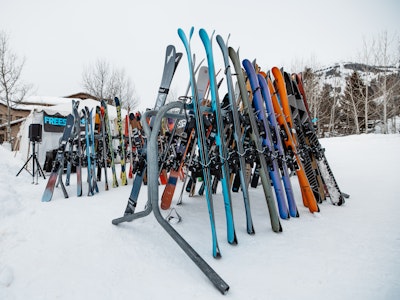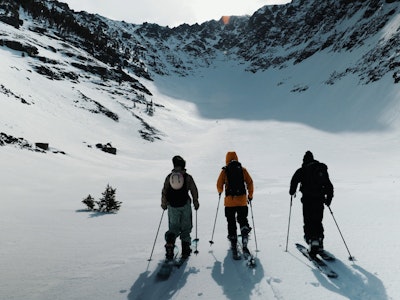PHOTO ABOVE: BRENDEN CLARKE SHOT BY BRETT SCHRECKENGOST
THE SKI AREA PERMIT ACT OF 1986 ESTABLISHED US FOREST SERVICE LAND USE PERMITS FOR RESORTS’ USE OF PUBLIC LAND—FOR A RENTAL FEE—FOR NORDIC AND ALPINE SKIING. THIS IS WHY YOU’LL NOTICE USFS SIGNS SURROUNDING SKI AREA BOUNDARIES. THE USFS MUST PROVIDE PUBLIC ACCESS TO THESE LANDS, WHICH IS WHY ENTRY POINTS—AKA SIDECOUNTRY GATES—EXIST.
A PRIVATE PROPERTY PARCEL IN THE MIDDLE OF TELLURIDE’S UPPER BEAR CREEK BASIN—WHICH IS MOSTLY USFS LAND—FORCED A CLOSURE LAST SEASON OF THREE ACCESS GATES NEAR THE TOP OF GOLD HILL. THIS OLD MINING PARCEL, KNOWN AS LITTLE BESSIE, DATES BACK TO 1891 AND LIES ACROSS THE EGRESS ROUTE THROUGH THE BEAR CREEK DRAINAGE. AN ESTIMATED 200 SKIERS PER DAY IN THE WINTER, AND EVEN MORE HIKERS IN THE SUMMER, TRAVEL THROUGH BEAR CREEK BASIN.
In December 2010, US Forest Service (USFS) Regional Ranger Judy Schutza made the unpopular decision to close backcountry access gates along Telluride’s boundary. The gate closures were required when private landowner Gold Hill Development Company (GHDC) informed the USFS that it did not want the public trespassing on its property and would begin exercising its private property rights. GHDC purchased the property in March 2010 and said that it did not want to be held liable for any injury or death that might occur on its land.
GHDC is comprised of partners Thomas Chapman and Ron Curry. “If there’s no mitigation of avalanches, it’s an uninsurable risk,” said Chapman. “There’s no law that will defend against the indefensible.” Chapman says that runs with names like “Deep and Dangerous” and “Graveyard,” which cross their upper Bear Creek parcel—Little Bessie— prove his concern.
While GHDC is within its legal rights to ban public access to its land, locals say the public has historically enjoyed and respected access to those areas. “We’ve had unimpeded access to that land,” says Tor Anderson, president of access advocacy group Telluride Mountain Club (TMC). “Other landowners never had a problem; now this one landowner has an issue.” Anderson adds that in nearly 100 years of hiking and 40 years of skiing in the Bear Creek area, there have been no reports of liability lawsuits.
Regardless of intentions, Chapman’s concerns about liability lawsuits are legitimate. But TMC asserts that GHDC’s liability worries are addressed by Colorado’s Recreational Use Statute, which is meant to “encourage owners of land within rural areas to make land and water areas available for recreational purposes by limiting their liability toward persons entering thereon for such purposes.”
Chapman says the statute doesn’t protect them enough based on the “limited liability” wording. And he points out that even if GHDC is protected under this statute, his company would likely have to spend hundreds of thousands of dollars defending itself should it be sued.
Many in the Telluride community believe that Chapman has another agenda for blocking skiers and hikers from his land. “No matter what Chapman says, his intent is clear: to make money and hold the land hostage,” said Anderson. “He’ll take extreme positions to further his cause.”
An October 2010 Wall Street Journal article—The Buzzard of Backcountry Strikes it Rich in National Parks—highlights some of Chapman’s prior real estate endeavors, which are very similar in form. The article reads, “Mr. Chapman, a small-town real-estate broker, has made a controversial career trading scattered parcels of private land that sit inside national forests and national parks.” He has subsequently struck it rich doing so.
“It doesn’t bother me,” Chapman says of the negative press. “I consider myself a 5th Amendment advocate. I fight for private-property rights.”
Chapman says the GHDC doesn’t plan to sell the Little Bessie parcel, nor do they have interest in tearing-up the property. Rather, they want to develop it into a backcountry yurt resort. Chapman says that they will provide avalanche control and allow skiers to access the land—for a fee.
But the development plan has its obstacles. In order to build a yurt resort, GHDC must have vehicle access. The company approached Schutza in April 2010 for permission to use the road, more commonly known as See Forever, but the USFS could not grant use because the road crosses Telluride’s (Telski’s) property—and therefore is not within the USFS’s control. GHDC subsequently approached Telski for permission to cross its property and, unsurprisingly, Telski denied them access. GHDC is now suing Telski over rights to the road.
For Telluride sidecountry seekers, there isn’t much good news in any of this, as Schutza says the gates will remain closed for the 2011/12 season. But another year of closed access gates is a drop in the bucket when faced with a much larger concern for backcountry enthusiasts. The outcome of this lawsuit could significantly shake up the dynamic between the USFS, private property owners and the public. If GHDC wins it could empower other Colorado landowners with private parcels abutting national forest area to begin flexing their private property rights in a similar fashion. The unfortunate result could be fewer access gates at Colorado resorts neighboring private land.
For detailed photos of the affected Telluride area, go to: tellurideoffpiste.com
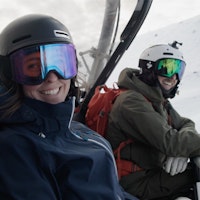
![[GIVEAWAY] Win a Head-to-Toe Ski Setup from IFSA](https://www.datocms-assets.com/163516/1765920344-ifsa.jpg?w=200&h=200&fit=crop)
![[GIVEAWAY] Win a Legendary Ski Trip with Icelantic's Road to the Rocks](https://www.datocms-assets.com/163516/1765233064-r2r26_freeskier_leaderboard1.jpg?w=200&h=200&fit=crop)
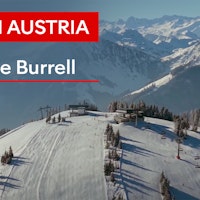
![[GIVEAWAY] Win a Legendary Ski Trip with Icelantic's Road to the Rocks](https://www.datocms-assets.com/163516/1765233064-r2r26_freeskier_leaderboard1.jpg?auto=format&w=400&h=300&fit=crop&crop=faces,entropy)
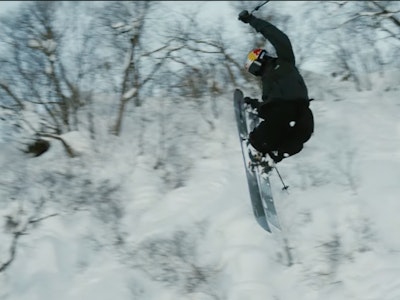

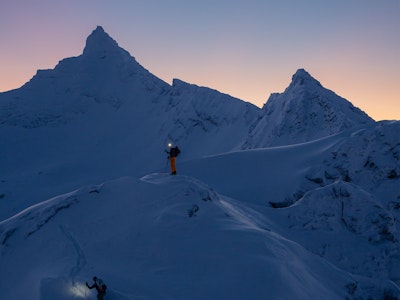
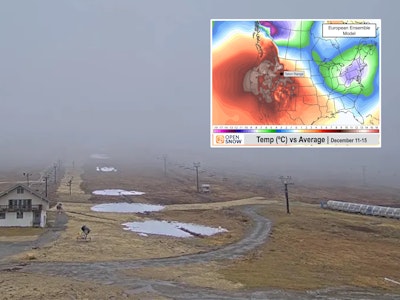
![[GIVEAWAY] Win a Head-to-Toe Ski Setup from IFSA](https://www.datocms-assets.com/163516/1765920344-ifsa.jpg?auto=format&w=400&h=300&fit=crop&crop=faces,entropy)
